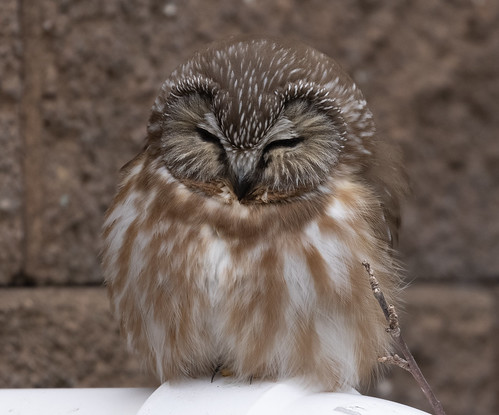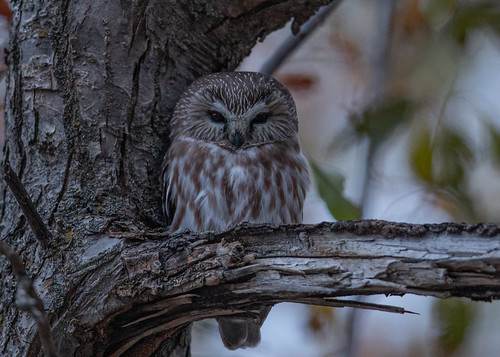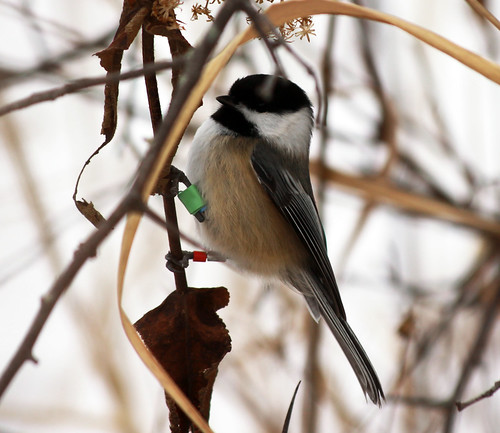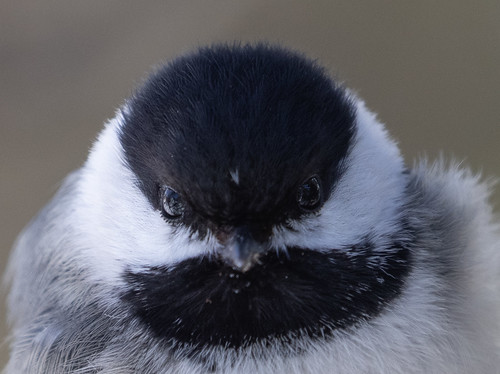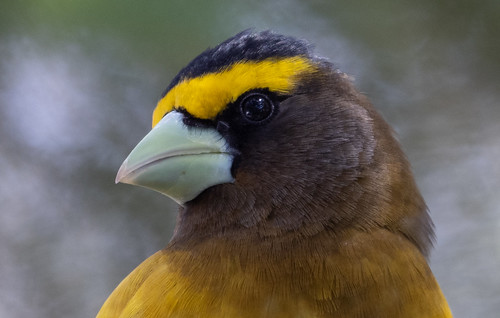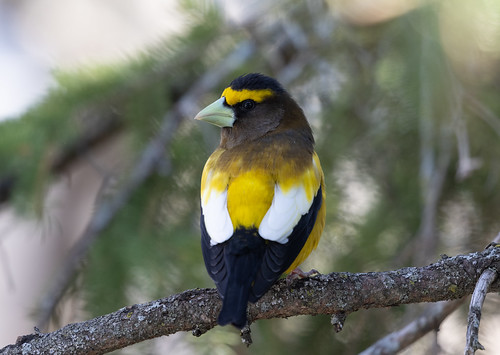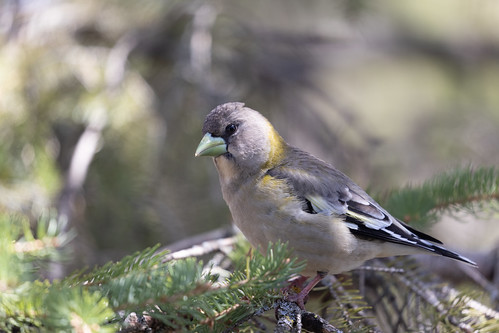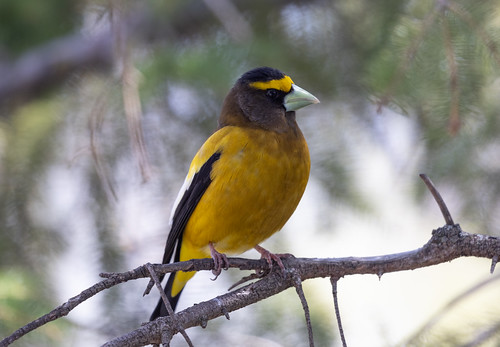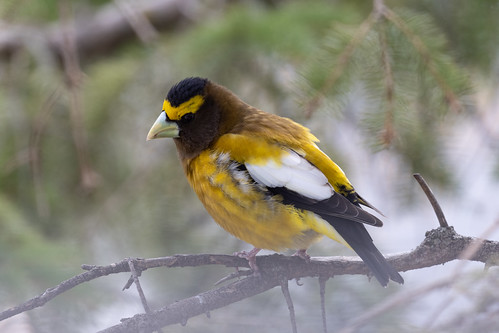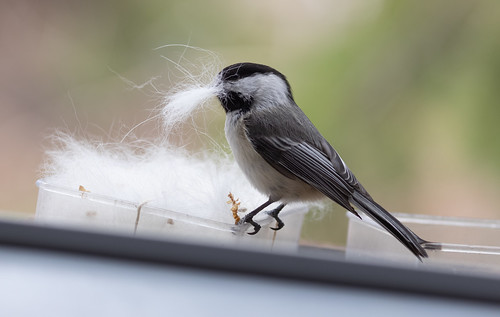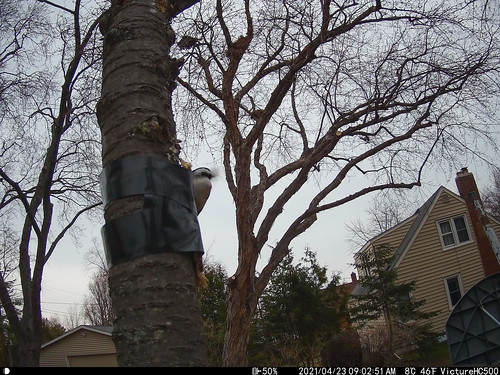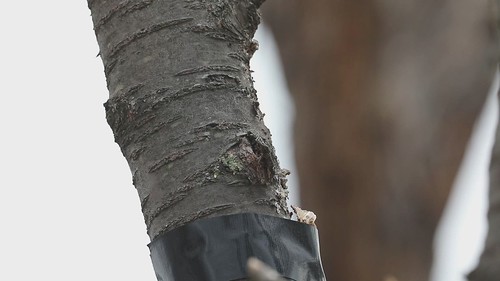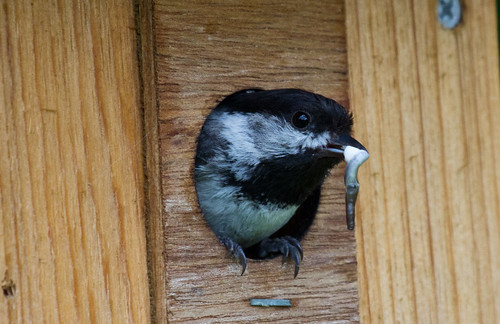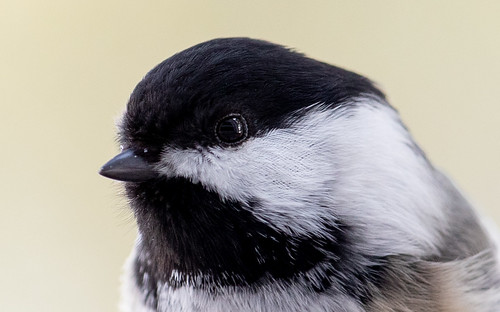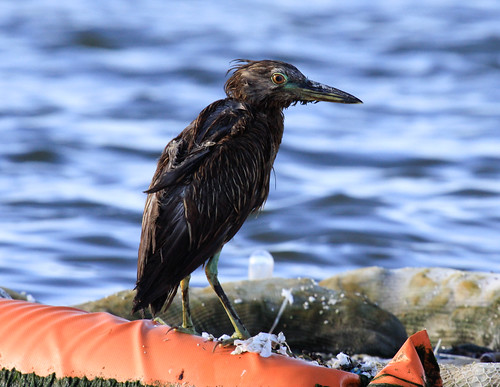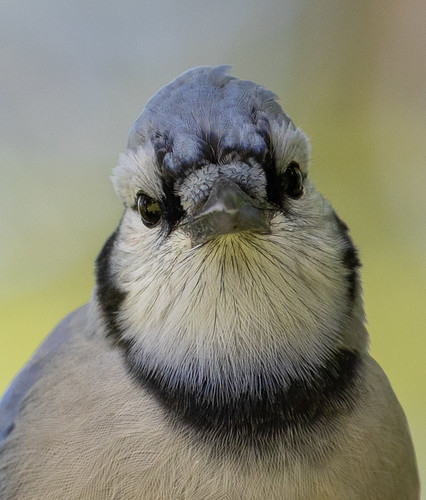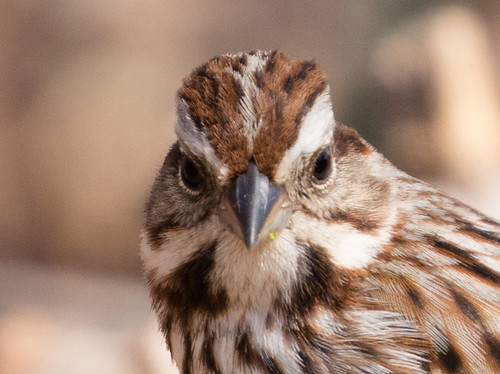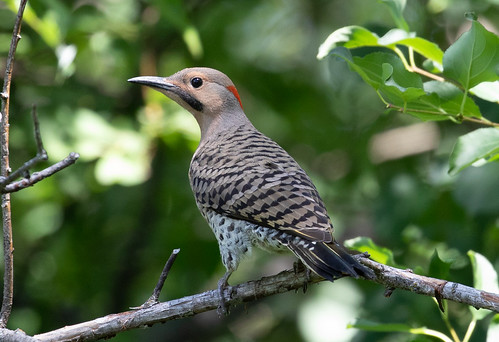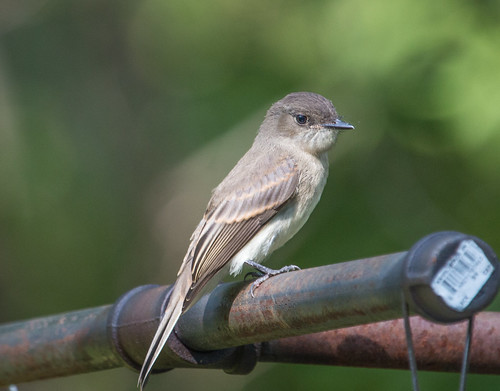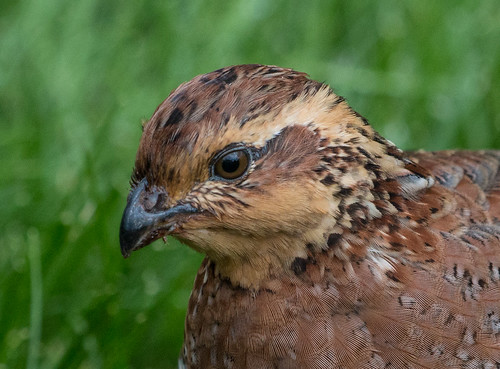Last Tuesday afternoon, a great guy named Tom sent me an email letting me know that he had a saw-whet owl in his yard. The bird had been there all day, sometimes perched in trees but usually on a gutter drainpipe. Tom sent a funny photo he took with his cell phone of the owl being scolded by a chickadee.
Russ and I headed right over and I got photos and a little video. The owl wasn’t doing much and for that moment, chickadees weren't about, but I love the video, with 44 seconds of just watching it breathing and blinking. Tom later told me that the owl had flown off about 8 pm, but returned the next day. I was thrilled to get to see the little guy.
Last fall, I got a message from my friend Amber, across the street, that a Saw-whet was in their yard that very moment. It was late in the day, so rather dusky, but I grabbed my camera and took a bazillion photos.
Amber had found that guy by their shed all on her own, but many, and perhaps most, roosting saw-whets are discovered thanks to swearing chickadees, who give the owl a piece of their minds while staying safely out of range and above those lethal talons.
When people get into a discussion about the “cutest” birds, chickadees and Saw-whet Owls are invariably mentioned. As a mammalian species that bears helpless, very high-maintenance young, our human eyes see almost all plump, big-headed, fluffy creatures as adorable and helpless despite reality. What lies beneath the saw-whet’s fluffy feathers is a self-sufficient hunter, fierce and unpitying when it comes to chickadees and other tiny, fluffy prey.
 |
| This Saw-whet is sitting on a mouse, keeping it thawed. You can see the mouse's feet. |
And chickadees are equally merciless when it comes to their prey species. I made a video just last week of a chickadee heartlessly tearing into a live mealworm.
Chickadee flocks may be welcoming and inclusive toward small songbirds and woodpeckers, but they’re ruthlessly intolerant toward those cute, fluffy saw-whets. Over the years dozens—probably at least a hundred—parents have brought their toddlers up to me to have those innocent little children tell me what a chickadee says. Our ears hear their scolding call as adorable chickadee-dee-dee notes, and parents would be horrified to realize that a literal translation could have come out of the mouth of Samuel L. Jackson in a Quentin Tarantino movie.
Ornithologists are fascinated by both chickadees and saw-whet owls, and so both species have been subjects of long-term banding and tracking studies. Chickadees are sedentary enough to be easy to track in a single location. Scientists at the Cornell Lab of Ornithology have put RFID chips on lots of chickadees making it easy to keep track of every time those individuals enter a feeder or nest box. Virtually all of the chickadee’s day-to-day, season-to-season, and year-to-year activities have been scrutinized thanks to how easy they are to track.
Saw-whets are far, far trickier. Thousands are banded over the continent each autumn, and with so many banding operations, quite a few are recaptured at later dates, giving us glimpses into their migratory movements. One female Saw-whet Owl banded at Hawk Ridge here in Duluth, Minnesota (which just happens to be in St. Louis County), on October 14, 2014, was re-trapped by banders at the World Bird Sanctuary in Valley Park, near St. Louis, Missouri, on November 7, 2017, three years later. The St. Louis banders nicknamed the bird Frankie after the granddaughter of one of the banders even before they learned that she had originally been banded by Duluth’s Frank Nicoletti. It’s amusing to think about one little saw-whet moving between two different St. Louis Counties and stitching a Frank connection between them, too.
 |
| "Frankie," the St. Louis County Missouri Saw-whet. Photo copyright 2017 by Pat Lueders |
All those little glimpses of Saw-whet Owls from banders focus on their migratory habits, not their day-to-day lives. We know more about their hunting habits from examination of pellets than from direct observation. Their nesting and breeding behaviors have been studied, but in nowhere near in the detail afforded by the diurnal, much more cooperative chickadee. And much of what we know about saw-whet roosting behaviors is made possible thanks to swearing chickadees— an excellent example of the value and utility of naughty words.
